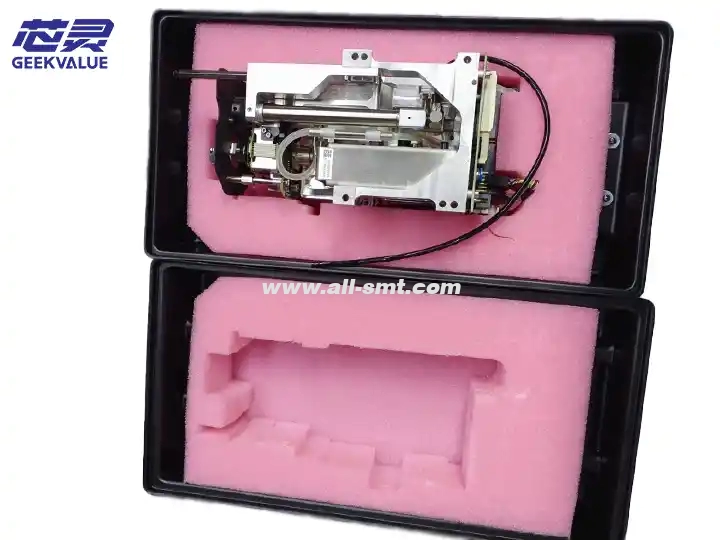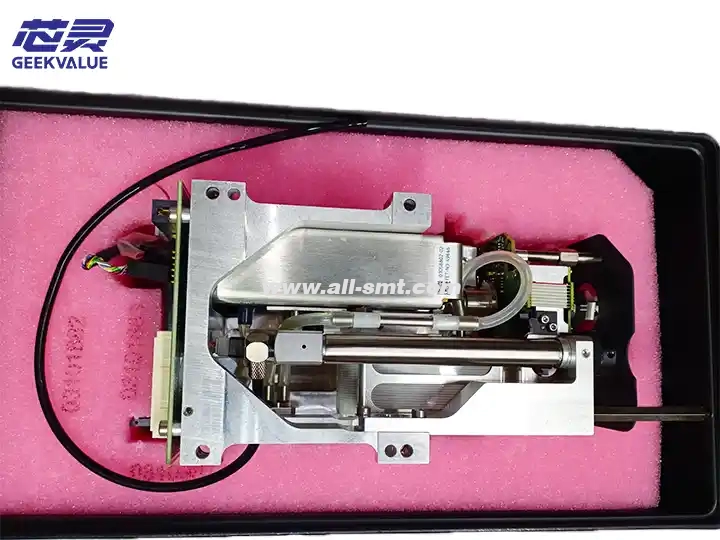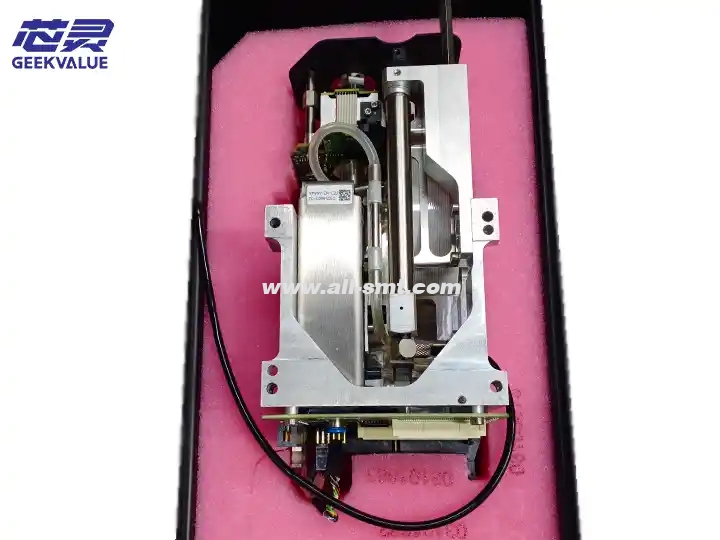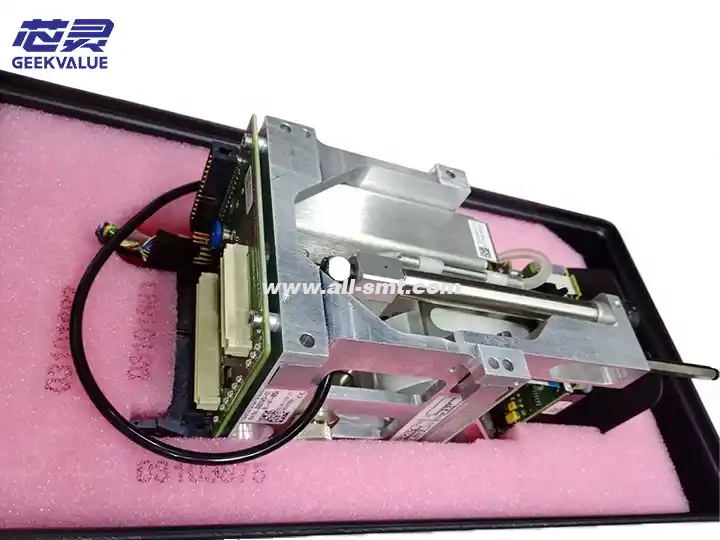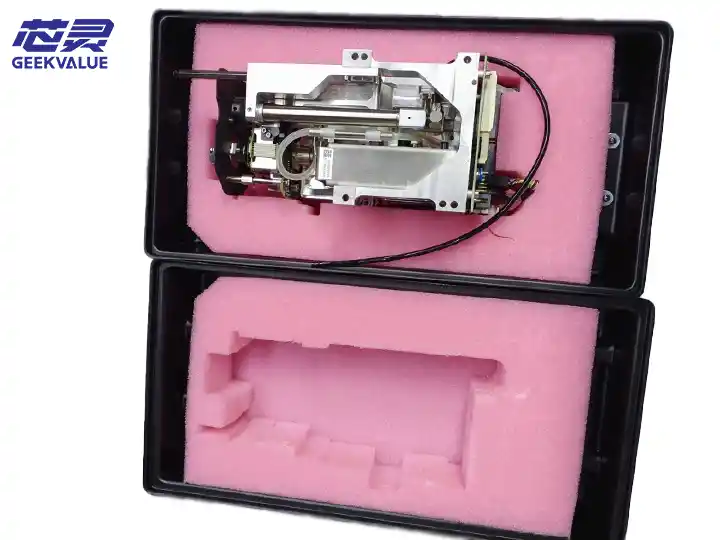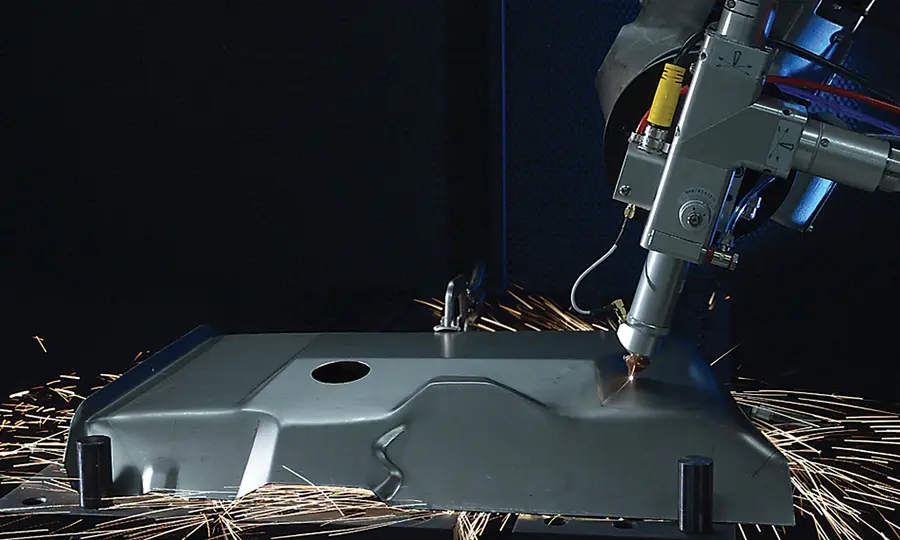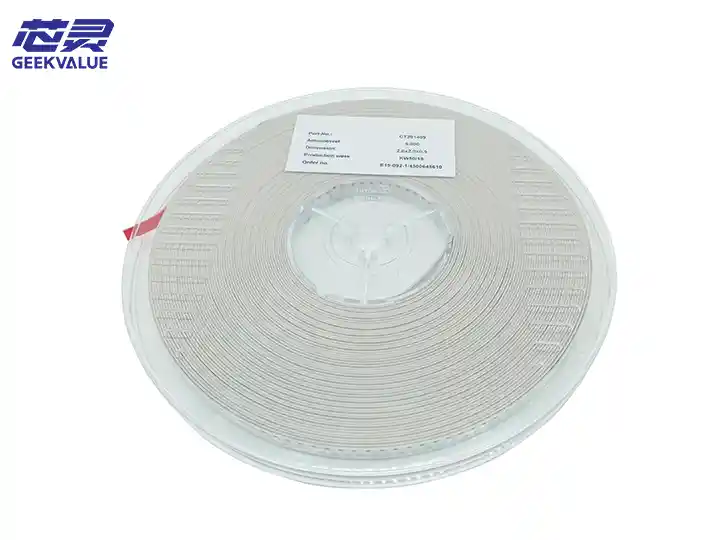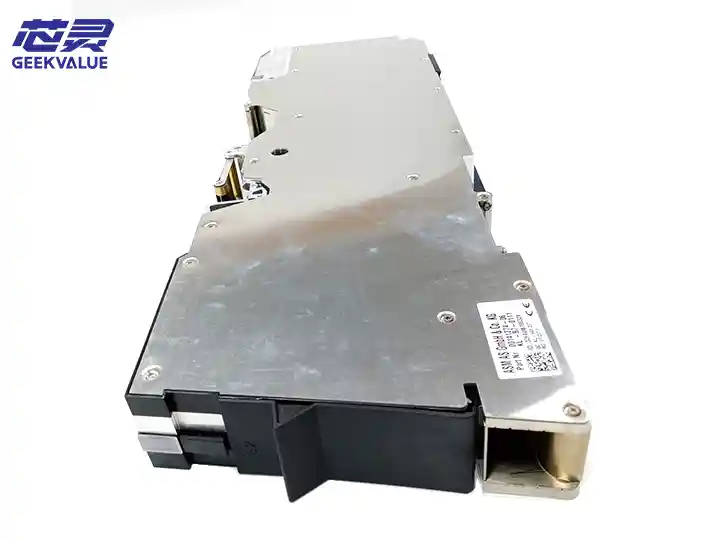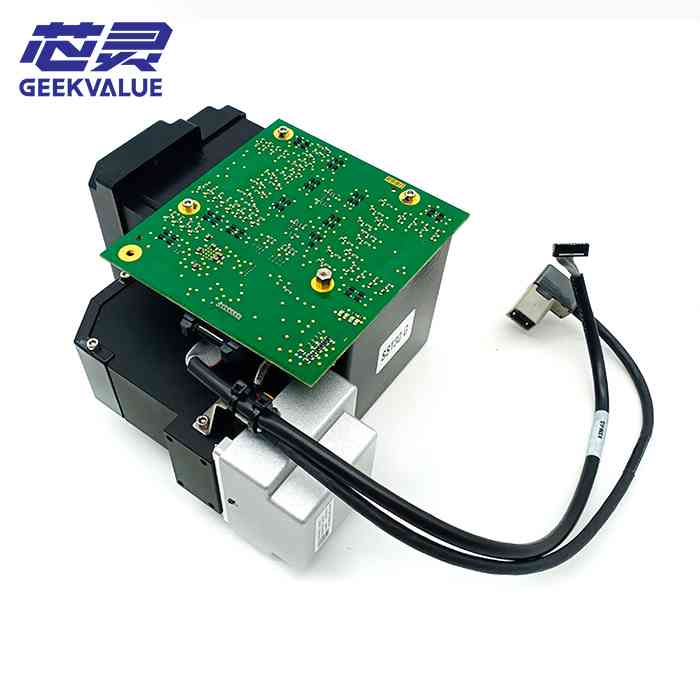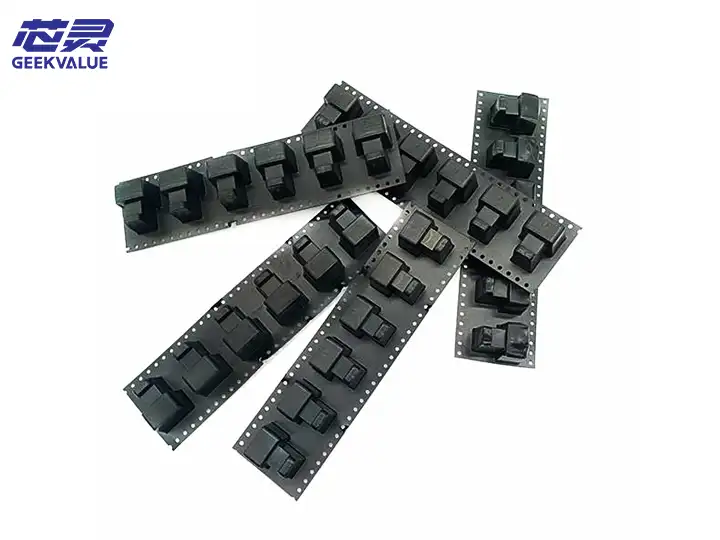I. Structural composition and core accessory functions
1. Core accessory functions
Accessories Model Function
Dual Z-axis linear motor 03097485-ZM Independently controls the vertical movement of two nozzles (stroke 0-20mm, resolution 0.1μm)
Harmonic deceleration rotation module 03097485-RT Realizes 0-360° continuous rotation of the nozzle (±0.01° accuracy, maximum speed 600rpm)
Vacuum generation system 03097485-VG Dual-channel independent control (vacuum degree -90kPa~+60kPa adjustable)
Pressure feedback unit 03097485-PS Real-time monitoring of mounting pressure (0.01-10N, sampling rate 1kHz)
Intelligent diagnosis module 03097485-DM Integrated temperature/vibration/current sensors, supports fault prediction
II. Precautions for use
1. Installation specifications
The flatness of the installation surface is ≤0.005mm/m, and a torque screwdriver (M6 screw/4.5N·m) is required
The calibration value of the synchronous belt tension is 40±2Hz (detected by a frequency meter)
2. Operation restrictions
Parameter Limit value Consequences of exceeding the limit
Maximum acceleration 15m/s² May cause the gear of the harmonic reducer to break
Continuous operating temperature -10℃~60℃ Permanent magnet demagnetization/seal ring aging
Mixing of vacuum channels is prohibited Cross-contamination causes component flying parts
3. Compatibility requirements
Only compatible with ASM SIPLACE TX series and above models
Required firmware version ≥V6.2.1 (old version requires upgrading the motherboard)
III. Common error messages and processing
Error code Meaning Emergency processing Fundamental solution
E9741 Z-axis position out of tolerance Suspend the use of abnormal nozzle 1. Recalibrate the grating ruler
2. Check the parallelism of the guide rail
E9742 Abnormal vacuum pressure Switch to the backup channel 1. Clean the filter
2. Replace the solenoid valve
E9743 Rotary encoder failure Restart after manual zeroing 1. Clean the encoder disk
2. Replace the encoder module
E9744 Temperature exceeds 65℃ Automatically reduce speed 1. Check the cooling fan
2. Optimize the mounting procedure
IV. Maintenance method
1. Periodic maintenance plan
Period Item Technical standard
Daily Nozzle rod cleaning Residual solder paste ≤0.1mg (detected by balance)
Weekly Guide rail lubrication Use Kluber ISOFLEX NBU15 grease
Monthly Vacuum system air tightness test Pressure test (-80kPa/5min pressure drop ≤5kPa)
Quarterly Harmonic reducer disassembly and inspection Gear wear ≤0.005mm
2. Deep maintenance process
Step 1: Disassemble the rotary module
Use a special puller (ASM P/N: 03090021)
Record the installation order of the corrugated gasket
Step 2: Bearing replacement
Must be replaced in pairs (NSK P4 grade angular contact bearing)
Preload adjusted to 0.02-0.03mm clearance
V. Common faults and maintenance ideas
Case 1: Dual Z-axis motion is not synchronized
Phenomenon: Mounted components are tilted
Diagnostic process:
Use a micrometer to measure the parallelism of the two axes (>0.01mm needs to be adjusted)
Check the wear of the synchronous belt (tooth deformation >0.2mm replacement)
Maintenance plan:
Redo the mechanical leveling of the gantry
Update motion parameters (ASM engineer authority required)
Case 2: Vacuum adsorption failure
Root cause analysis tree:
Chart
Code
VI. Technology upgrade direction
Intelligent predictive maintenance
Vibration spectrum AI analysis will be supported in 2024 (warning of bearing failure 3 weeks in advance)
Lightweight transformation
Carbon fiber nozzle rod (weight reduction of 30%, speed increase of 15%)
VII. Spare parts management suggestions
Key spare parts Inventory ratio Replacement time
Harmonic reducer assembly 1:5 2.5 hours
Vacuum generator module 1:10 0.5 hours
Pressure sensor 1:8 1 hour
VIII. Summary
The TWIN HEAD achieves the industry-leading ±15μm@3σ placement accuracy through dual-drive independent control + harmonic drive. Special attention should be paid during maintenance:
It is forbidden to mix nozzle rods with different wear states
Dynamic balance test must be performed every month
It is recommended to configure a vibration analyzer for status monitoring
